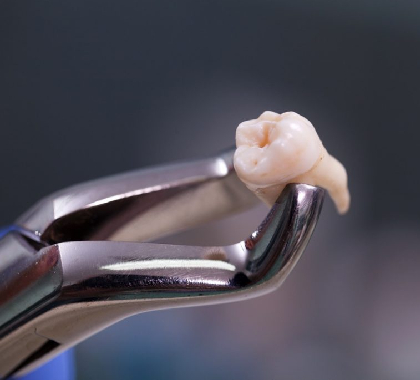Dental extractions involve the removal of teeth from the dental alveolus or sockets in the jawbone. This procedure is typically performed by a dentist or an oral surgeon and is necessary for various reasons, including severe tooth decay, periodontal (gum) disease, dental trauma, and overcrowding of teeth, or to make space for orthodontic treatment. While the thought of tooth extraction may cause anxiety for many, advancements in dental techniques and anesthesia ensure it is a relatively straightforward and pain-minimized procedure. After an extraction, patients are given specific aftercare instructions to promote healing and prevent complications. Proper care post-extraction is crucial for the health of the mouth and the prevention of issues like dry socket, where the blood clot at the site of extraction is dislodged, exposing bone and nerves.

In Patna, Dr. Sukhpreet Kaur is renowned for her gentle approach and expertise in dental extractions, a procedure often necessary when a tooth is too damaged or decayed to be saved. Utilizing state-of-the-art techniques and equipment, Dr. Kaur ensures that her patients experience minimal discomfort and swift recovery. Her clinic is equipped with modern amenities to provide a calming environment, easing the anxieties commonly associated with dental procedures. Before proceeding with an extraction, Dr. Kaur thoroughly assesses the affected tooth and discusses all possible treatment options with the patient, prioritizing their comfort and oral health. Post-extraction, she offers comprehensive aftercare advice to promote healing and prevent complications, making her a trusted choice for dental care in Patna.
Dental Extractions F&Q's
What Is a Dental Extraction?
A dental extraction is the process of removing a tooth from its socket in the jawbone. It’s a common dental procedure performed for a variety of reasons, including tooth decay, infection, crowding, or damage beyond repair.
Are There Different Types of Dental Extractions?
Yes, there are mainly two types: simple extractions and surgical extractions. Simple extractions involve removing a tooth that is visible above the gums using specialized tools. Surgical extractions are more complex and are used when a tooth has not fully erupted or is broken at the gum line, requiring an incision into the gum to remove the tooth or pieces of a tooth.
What Can I Expect During a Dental Extraction Procedure?
The procedure typically starts with the application of a local anesthetic to numb the area around the tooth. For simple extractions, dentists use an instrument called an elevator to loosen the tooth and forceps to remove it. Surgical extractions may involve making a small incision into the gum and removing bone or breaking the tooth into smaller pieces for easier removal.
How Long Does It Take to Recover from a Dental Extraction?
Recovery time varies depending on the complexity of the extraction and the individual’s healing ability. Generally, the initial healing phase, where the gum tissue closes over the extraction site, takes about one to two weeks. Complete healing of the bone and soft tissues may take several months.
What Are the Possible Complications of Dental Extractions?
While dental extractions are generally safe, they can occasionally lead to complications such as infection, prolonged bleeding, dry socket (where the blood clot fails to form or is dislodged), and damage to surrounding teeth or jawbone.
How Can I Ensure a Smooth Recovery After a Dental Extraction?
Follow your dentist’s aftercare instructions carefully. This typically includes resting, avoiding strenuous activity for a few days, not smoking, eating soft foods, and keeping the extraction site clean. Also, avoid using a straw or spitting forcefully to prevent dislodging the blood clot from the socket.











